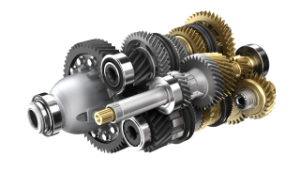 One of the most rewarding experiences for an improvement science coach is to sense when an individual or team shift up a gear and start to accelerate up their learning curve.
One of the most rewarding experiences for an improvement science coach is to sense when an individual or team shift up a gear and start to accelerate up their learning curve.
It is like there is a mental gearbox hidden inside them somewhere. Before they were thrashing themselves by trying to go too fast in a low gear. Noisy, ineffective, inefficient and at high risk of blowing a gasket!
Then, they discover that there is a higher gear … and that to get to it they have to take a risk … depress the emotional clutch, ease back on the gas, slip into neutral, and trust themselves to find the new groove and … click … into the higher gear, and then ease up the power while letting out the clutch. And then accelerate up the learning curve. More effective, more efficient. More productive. More fun.
Organisations appear to behave in much the same way.
Some scream along in the slow-lane … thrashing their employee engine. The majority chug complacently in the middle-lane of mediocrity. A few accelerate past in the fast-lane to excellence.
And they are all driving exactly the same model of car.
So it is not the car that is making the difference … it is the driving.
Those who have studied organisations have observed five cultural “gears”; and which gear an organisation is in most of the time can be diagnosed by listening to the sound of the engine – the conversations of the employees.
If they are muttering “work sucks” then they are in first gear. The sense of hopelessness, futility, despair and anger consumes all their emotional fuel. Fortunately this is uncommon.
If we mainly hear “my work sucks” then they are in second gear. The feeling is of helplessness and apathy and the behaviour is Victim-like. They believe that they cannot solve their own problems … someone else must do it for them or tell them what to do. They grumble a lot.
If the dominant voice is “I’m great but you lot suck” then we are hearing third gear attitudes. The selfishly competitive behaviour of the individualist achiever. The “keep your cards close to your chest” style of dyadic leadership. The advocate of “it is OK to screw others to get ahead”. They grumble a lot too – about the apathetic bunch.
And those who have studied organisations suggest that about 80% of healthcare organisations are stuck in first, second or third cultural gear. And we can tell who they are … the lower 80% of the league tables. The ones clamouring for more … of everything.
So how come so many organisations are so stuck? Unable to find fourth gear?
One cause is the design of their feedback loops. Their learning loops.
If an organisation only uses failure as a feedback loop then it is destined to get no more than mediocrity. Third gear at best, and usually only second.
Example.
We all feel disappointment when our experience does not live up to our expectation. But only the most angry of us will actually do something and complain. Especially when we have no other choice of provider!
Suppose we are commissioners of healthcare services and we are seeing a rising tide of patient and staff complaints. We want to improve the safety and quality of the services that we are paying for; so we draw up a league table using complaints as feedback fodder and we focus on the worst performing providers … threatening them with dire consequences for being in the bottom 20%. What happens? Fear of failure motivates them to ‘pull up their socks’ and the number of complaints falls.
Job done?
Unfortunately not.
All we have done is to bully those stuck in first or second gear into thrashing their over-burdened employee engine even harder. We have not helped anyone find their higher gear. We have hit the target, missed the point, and increased the risk of system failure!
So what about those organisations stuck in third gear?
Well they are ticking their performance boxes, meeting our targets, keeping their noses clean. Some are just below, and some just above the collective mean of barely acceptable mediocrity.
But expectation is changing.
The 20% who have discovered fourth gear are accelerating ahead and are demonstrating what is possible. And they are raising expectation, increasing the variation of service quality … for the better.
And the other 80% are falling further and further behind; thrashing their tired and demoralised staff harder and harder to keep up. Complaining increasingly that life is unfair and that they need more, time, money and staff engagement. Eventually their executive head gaskets go “pop” and they fall by the wayside.
Finding cultural fourth gear is possible but it is not easy. There are no short cuts. We have to work our way up the gears and we have to learn when and how to make smooth transitions from first to second, second to third and then third to fourth.
And when we do that the loudest voice we hear is “We are OK“.
We need to learn how to do a smooth cultural hill start on the steep slope from apathy to excellence.
And we need to constantly listen to the sound of our improvement engine; to learn to understand what it is saying; and learn how and when to change to the next cultural gear.
